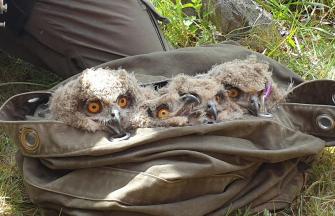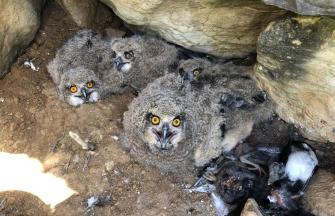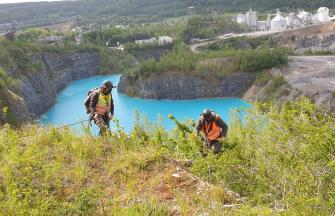Seilles, May 21, 2021 - This year, Carmeuse and the Royal Belgian Institute of Natural Sciences celebrate their 30 years of collaboration. A very fruitful cooperation that has allowed the observation and protection of several vulnerable bird species that have found in the quarries the right conditions for their development.
This year, the ornithologists of the IRSNB have spotted a family of Great Horned Owls in the Seilles quarry. The institute will soon proceed to the ringing of the chicks in order to continue the monitoring which allows to observe the evolution of the population of this species which had completely disappeared from Belgium.
In 1991, Didier Vangeluwe, head of the Belgian Banding Center (BeBirds) and a well-known expert in the world of ornithology, and Mr. Dominique Collinet, former boss of the Carmeuse company, met for the first time to evaluate how to study the abundant biodiversity in the Carmeuse quarries and how to encourage this development for new species. Since then, the collaboration established has allowed to observe in the Carmeuse quarries many nesting Great Horned Owls but also Peregrine Falcons and Bank Swallows. The data collected, among others via ringing, have allowed to advance knowledge!
Carmeuse and the Institute are very proud of this cooperation which allows the Institute to have access to a very specific environment of a quarry on the one hand, and on the other hand, it allows Carmeuse to better understand the biological richness that is found in its quarries and to understand how to integrate the presence of these winged visitors in the quarry exploitation plans.
Great horned owls have been nesting in the quarry walls at Seilles since the mid-1990s. This year, at least two chicks were born and are doing well. They are in an accessible place which will allow the Institute to proceed to the ringing of the chicks in order to follow their evolution.



